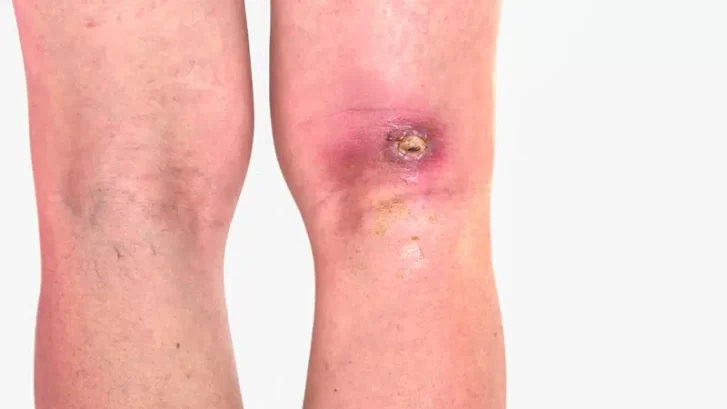Venous ulcers, also known as leg ulcers, are chronic wounds that occur on the lower legs or feet due to underlying venous insufficiency. These ulcers can be painful, debilitating, and challenging to manage without proper care. In this blog, we will delve into the causes, prevention strategies, and treatment options for venous ulcers to help you understand and manage this condition effectively.
Causes of Venous Ulcers
Chronic Venous Insufficiency: Venous ulcers often result from chronic venous insufficiency, where the veins in the legs fail to efficiently return blood to the heart.
Increased Pressure in Veins: Blood pooling in the veins due to valve dysfunction or obstruction increases pressure on the surrounding tissues, leading to ulcer formation.
Risk Factors: Factors such as obesity, aging, prolonged standing or sitting, history of deep vein thrombosis (DVT), and varicose veins contribute to venous ulcer development.
Prevention of Venous Ulcers
Compression Therapy: Wearing compression stockings improves blood flow in the legs, reduces swelling, and prevents ulcer formation.
Healthy Lifestyle Habits: Maintaining a healthy weight, staying physically active, and avoiding prolonged periods of standing or sitting help reduce the risk of venous ulcers.
Leg Elevation: Elevating the legs when resting promotes venous return and reduces pressure on the veins, preventing complications.
Regular Monitoring: Individuals with venous insufficiency or a history of ulcers should undergo regular check-ups and follow preventive measures advised by healthcare professionals.
Treatment Options for Venous Ulcers
Wound Debridement: Removal of dead or damaged tissue from the ulcer site promotes healing and prevents infection.
Dressings and Bandages: The application of specialized dressings and compression bandages maintains moisture balance, protects the wound, and supports healing.
Topical Medications: Antibacterial or antimicrobial ointments may be prescribed to prevent infection and promote healing.
Compression Therapy: Continued use of compression stockings or bandages helps improve circulation, reduces swelling, and aids in ulcer healing.
Surgical Interventions: In severe cases or when conservative measures fail, surgical procedures such as vein ligation, vein stripping, or skin grafting may be necessary to address underlying venous insufficiency and promote wound closure.
Managing Venous Ulcers with Dr. Ravul Jindal
As a leading expert in vascular health, Dr. Ravul Jindal emphasizes the importance of early intervention and comprehensive care for venous ulcers. By understanding the underlying causes and adopting preventive measures, individuals can effectively manage venous ulcers and improve their quality of life.
In conclusion, venous ulcers are a common and potentially serious complication of venous insufficiency, requiring comprehensive management to promote healing and prevent recurrence. By understanding the causes, adopting preventive measures, and seeking timely treatment, individuals can effectively manage venous ulcers and improve their quality of life.
If you or a loved one is affected by venous ulcers, don’t hesitate to seek professional guidance from us and explore available treatment options.


